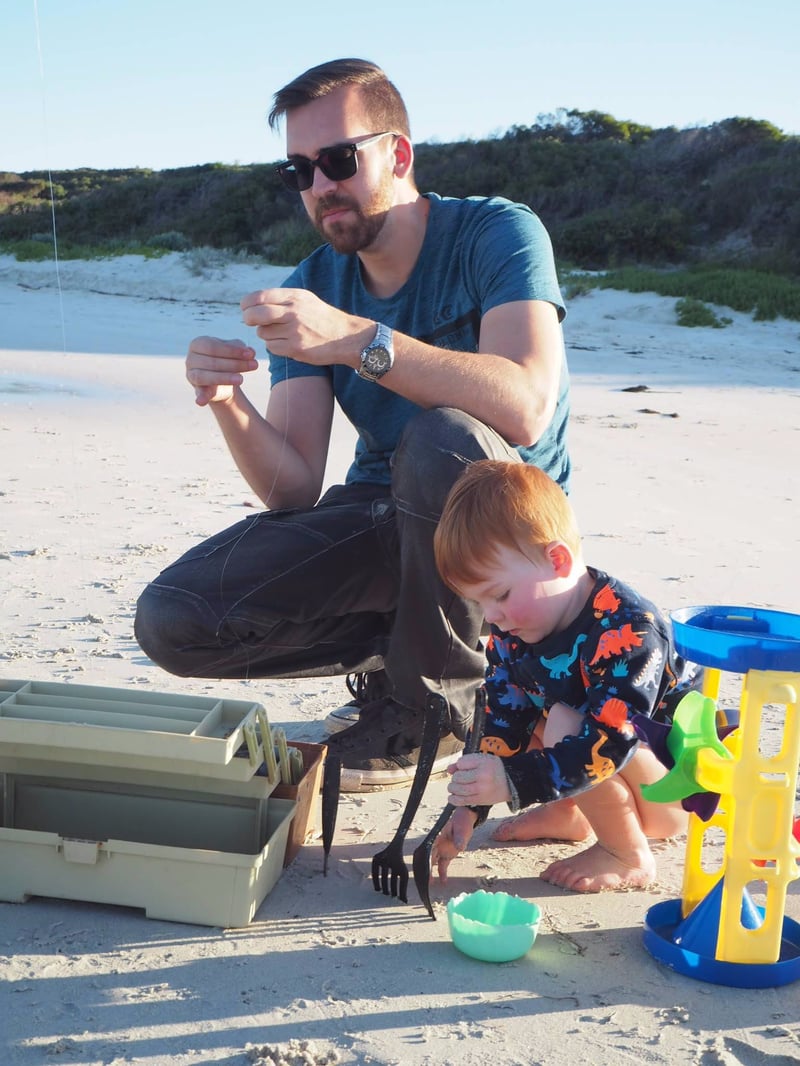
Chris, thanks for your time this morning, how long have you been with OSIT?
I was looking at this yesterday actually! Igor asked me to update my corporate resume!
When was the last time you put a resume together!?
Well, that’s what I was trying to figure out! It must be about 8 or 9 years ago I’ve been with OSIT since 2012.
Can you cast your mind back for me? What where you doing before you joined OSIT?
I was working at a private school in South Perth for about 3 years. It was my first IT job. It was a helpdesk role, so it’s very different to working in a managed service provider, but it was good experience to get my foot in the door.
What did your role involve when you first joined OSIT?
We had a NOC back then, which was essentially a helpdesk. And it was me and one other team member. And that was it. That was the whole helpdesk team. There were other team members that did onsite stuff, but I was just doing remote support at the time.
Can you share a bit about how your role and career has developed until today?
A lot! It’s been a journey!
I was updating my corporate bio just yesterday and I’ve been promoted about 5 or 6 times in the 8 years I’ve been here – partly due to the expansion of the company and partly from general career progression.
I started off as a support engineer on the helpdesk before knuckling down to smash out a bunch of Microsoft certs. When I got my MCSA I levelled up to a Systems Engineer which meant that I got to do a bit more onsite work and take on the responsibility of looking after a handful of client sites. I got to build a good relationship with the clients too, which was nice, most of which I still check-in with today.
We then changed our support model - splitting into separate support teams (Red and Blue). Which meant that my role morphed into a hybrid Systems Support Engineer for about 6 months before I was promoted to a project engineer.
The Project Engineer was a really hands-on technical role that was dedicated to implementing new systems and infrastructure projects that were designed by our Project Manager.
I was later promoted again, which meant that I was responsible for designing the projects and solutions that would deliver the customer’s desired outcome. There was a sales and business aspect to it too, like figuring out what the outcome needed to be, the budget restraints, writing proposals, sourcing quotes from our sales team, and designing the actual solution. Having said all that, it was still hands on and I got to manage and be involved in the technical implementation of the project too – which was nice. It meant I got to see all of the design and planning come together at the end.
I did that for about 3 years, before moving up to the technical specialist role that I’m in today.
What does a typical day to day look like?
My Technical Specialist role is very different to any of my previous ones. I’m managing OSIT’s standard stack of products. This means I review the technology and processes that deliver our services and work out whether there’s a better solution/way of applying that technology that can better benefit our customers and operations.
I’m responsible for our internal training academy for our internal support team too. Essentially, I design and create labs for our support engineers, so they can get hands on with new technology and develop their skills in real-world scenarios.
A recent project saw me design a cloud platform that offers cloud storage and services for several of our clients, so my day to day includes the support and maintenance of the infrastructure to make sure our cloud services are running smoothly.
You mentioned that you run the internal training academy, can you shed a little more light on that?
The idea behind the academy Is our way of breaking away from the traditional learning methods of reading from a book, or watching a video online. Because when you think about it, how much of that information do we actually retain and are able to recall on when the time comes to apply the knowledge? 10%? Maybe 30%? If we’re honest, it’s probably not the most effective learning strategy for our hands-on technical industry.
Our view is that it’s better to get our team hands-on with the equipment, so they can break stuff, figure it out and ultimately get involved to learn the product.
I’ve setup a lab and provide each academy member with an objective and give them the freedom to figure out the solution. They’ve got all the support and assistance they need, but they’re encouraged to give it a go, so they can learn from their mistakes.
We ran a Veeam training session last month, so we paired up the academy members, gave them the objective and each pair would go nuts to figure out the solution. I’m there to answer questions and provide a helping hand and some guidance but ultimately, the idea is to get stuck in and learn from what you’re actually doing instead of reading about it.
Do you have a mentor or role model at OSIT? And if so, what’s the best piece of advice you’ve received from them?
Unofficially, it would have to be Igor. He’s at the top of his game. His general approach to tackling projects and being open to do whatever it takes to make stuff happen and get the result for the client is something that I am building into my own skillset.
Let’s talk growth, as our technical specialist you’ve obviously levelled up your role since joining OSIT, so what's your secret!?
A lot of the drive to be the best I can be came from myself, but whenever I expressed an interest in learning something new or developing a skill OSIT supported me at every step. Back when I first started, a lot of my study was done in my own time or after work - which is still very much encouraged. But we now provide everyone with 40 hours every year – within business hours – to put towards training, so you get paid for learning and don’t have to do it outside of work.
At the end of every year, you get to discuss your development plan with HR too – this is where you get to figure out what you want to achieve for the next 12 months and what courses you want to do.
Monday mornings… You’re walking into the office.. How are you feeling?
I come straight to the office from my early morning gym session around the corner, so I’m usually a little bit drained from that! Although, I have a shower at work and grab a coffee from the kitchen which preps me to tackle the day.
I know you’re not a member of our recruitment team, but given you’ve been promoted about a million times and have 8+ years of experience at OSIT, what insider tips would you give candidates looking to secure a career with us?
It’s important that when you come in, you need to show your willingness to learn, your willingness to put the effort in, to learn systems, processes and demonstrate a desire to put some time aside to figure stuff out and just learn.
You might not be technically great right now, but if you can demonstrate how you’ve learned other things in the past and your ability to put in the effort to get a certification, or overcome a business issue - where you’ve gone out of your way to nail a good outcome for the client or company - then you should make every effort to convey that in your application.
And finally, can you share one thing you love about working for OSIT?
Definitely the People. It’s what drives me to come into work every day. I work with a great bunch of guys - and girls - and they’re just great fun to be around.







